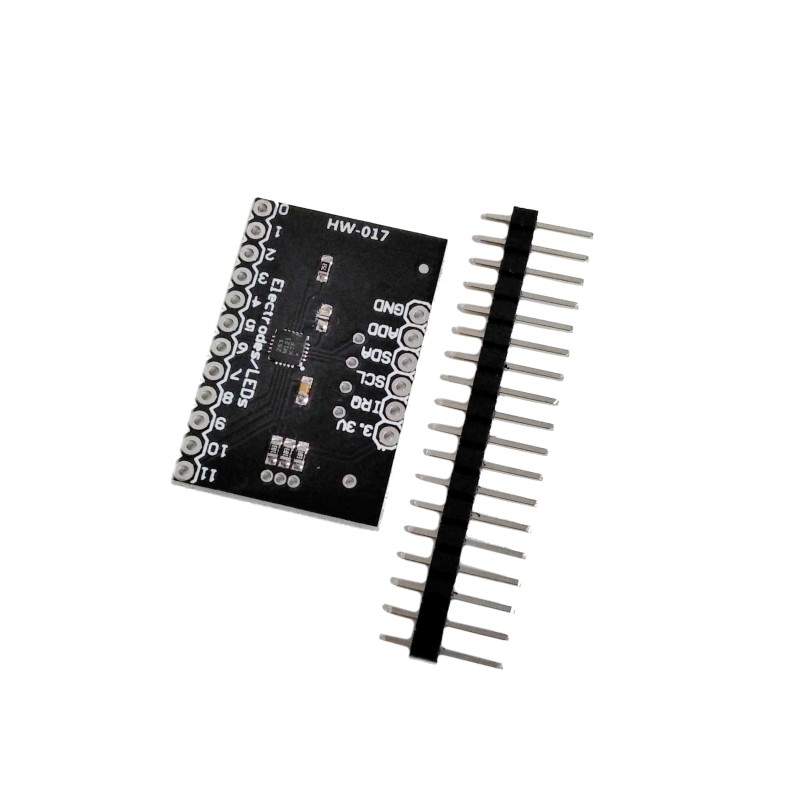- -1.00 JOD





The Capacitive Touch Sensor is useful in your projects if you want to control devices by touching a metal object.
The Capacitive touch sensor is a low-power, state-of-the-art device. It is useful in various electronics projects where you need to detect human touch or proximity to a particular metal electrode.
The capacitive module can read data from twelve electrodes simultaneously, which will act as "buttons".
The module requires power between 1.7 V and 3.3 V.
The integrated circuit contains several registers that can provide information about the collected data from filtered or unfiltered electrodes, and registers where thresholds or debounce information can be set.
It communicates through the I2C protocol. The IRQ of the module is used to signal interruptions. An interrupt is a function that will be executed when an event occurs, interrupting the functions that were executed when the trigger event occurred. Thus, there is no need to keep track of the status of the twelve buttons, but the module may announce through the IRQ line when touching occurs.
Buttons are made by means of electrodes - objects that drive electricity - connect to the 0-12 lines of the capacitive module. You can make buttons of any conductive material. You can use the module and a speaker to build a piano that uses coin keys, juice boxes, or you can build an alarm system that detects touching metal objects (connected by wires to the module).